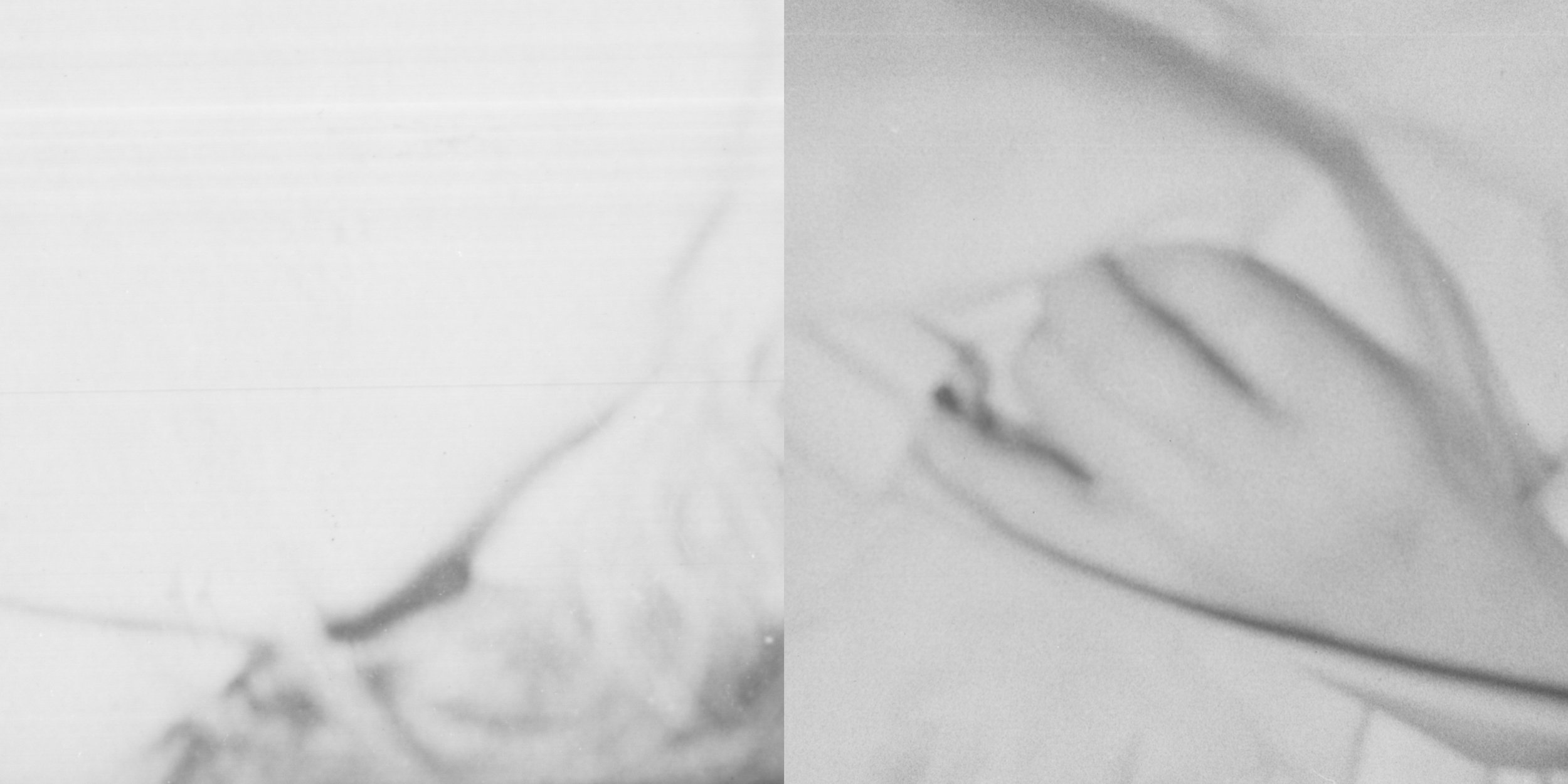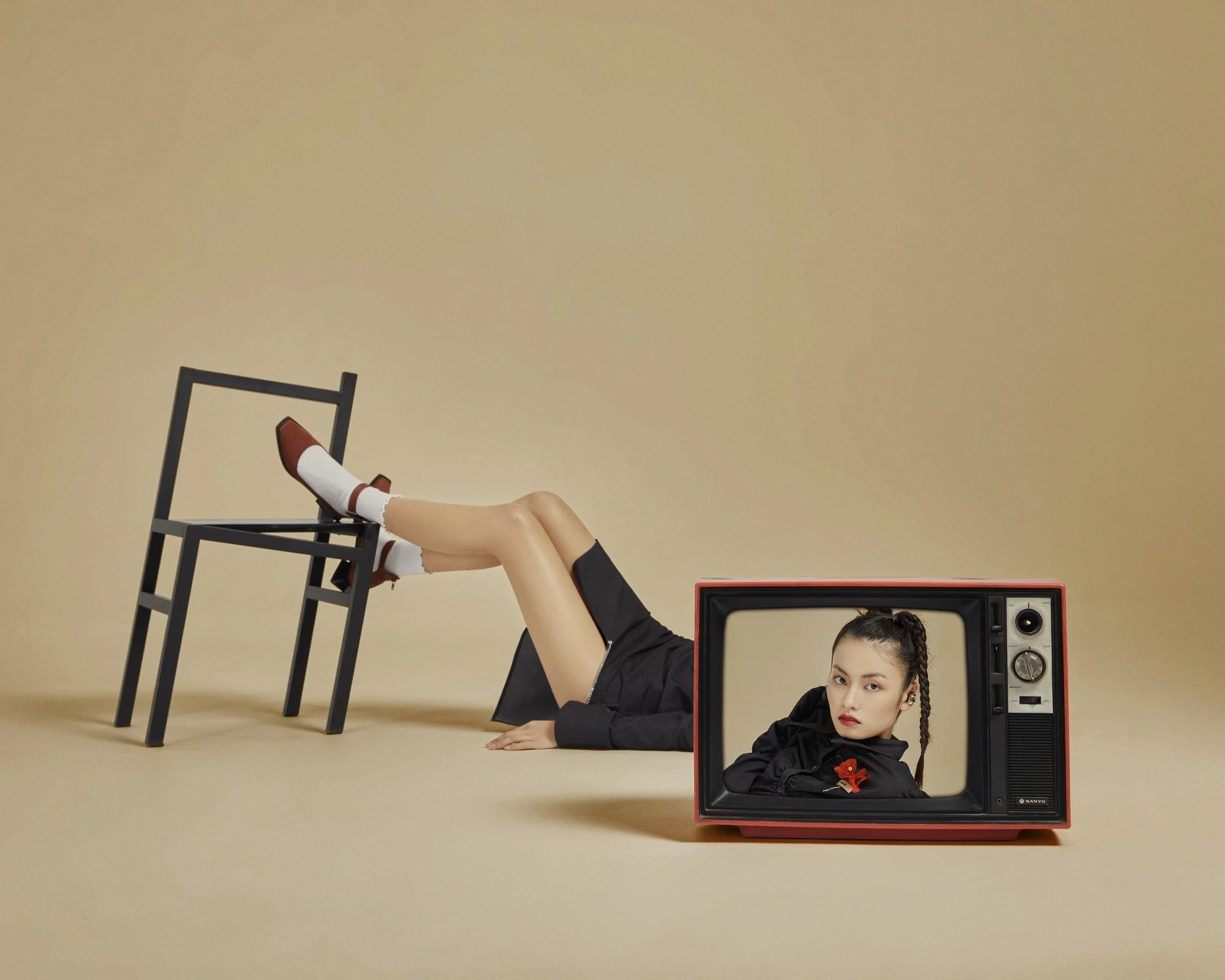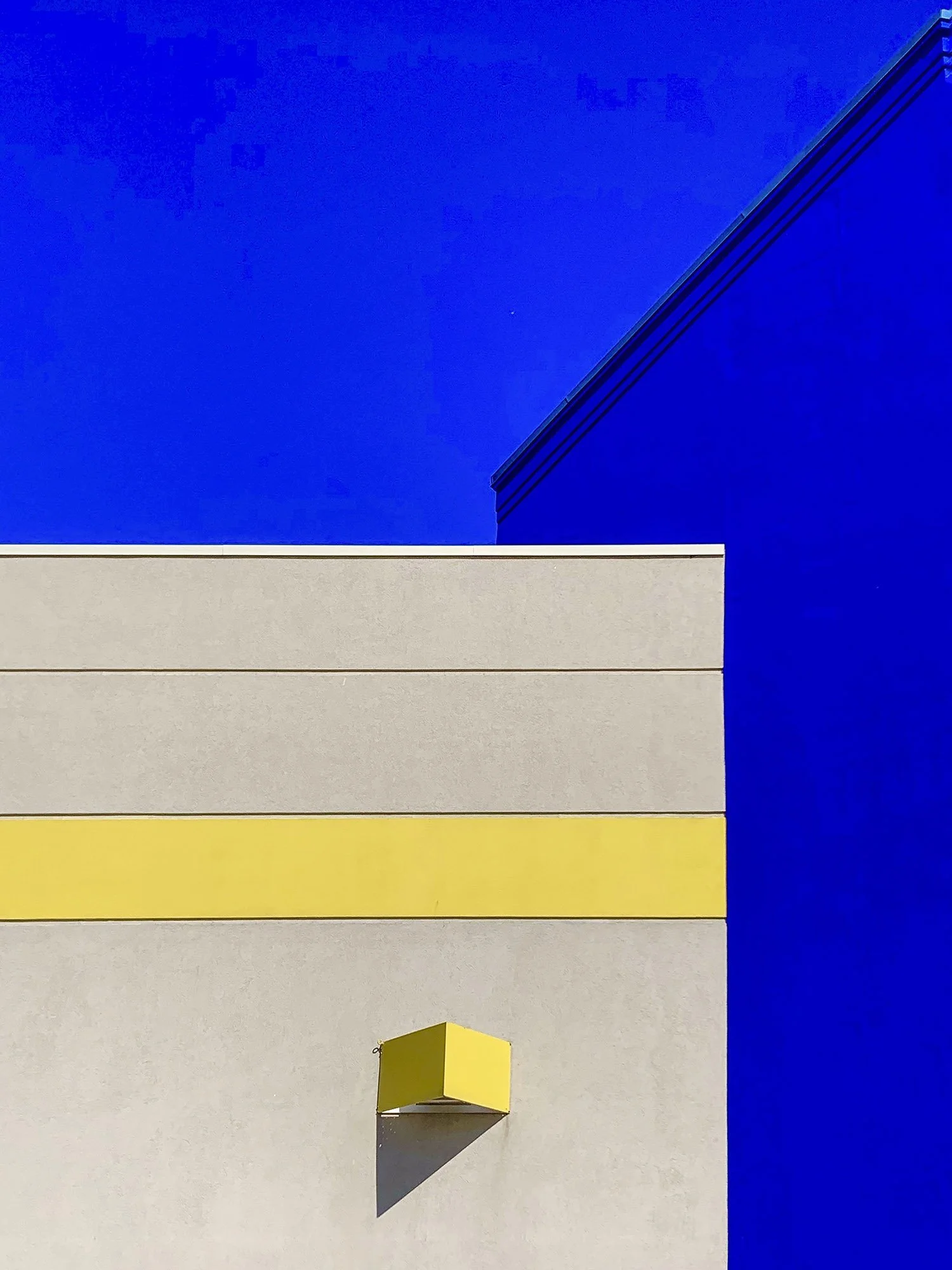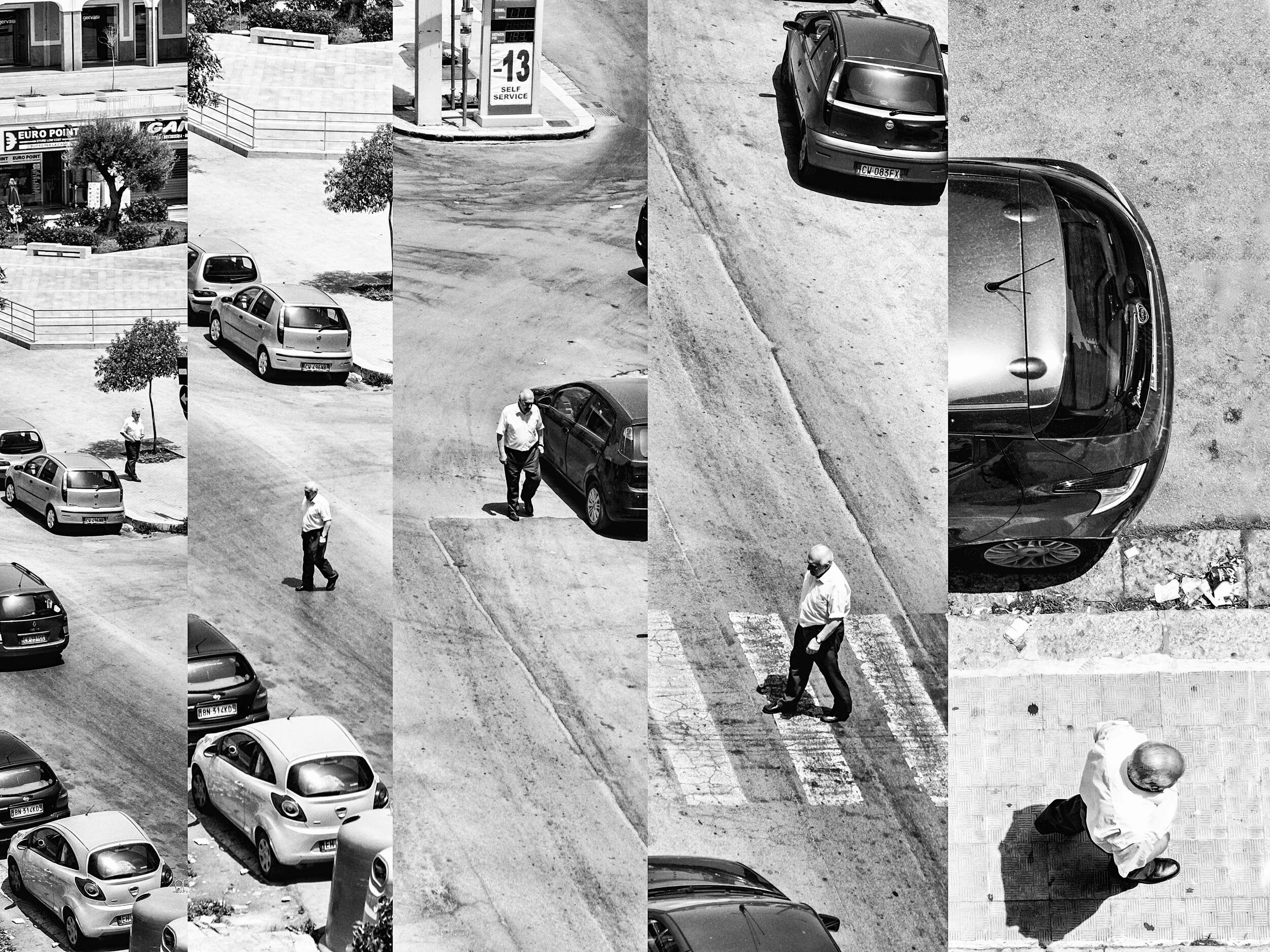INTERVIEW | Yuehan Hao
10 Questions with Yuehan Hao
Al-Tiba9 Art Magazine ISSUE15 | Featured Artist
Yuehan Hao (b.2000) is an artist who focuses on visual creation. She graduated from the Kede College of Capital Normal University, majoring in photography. The work takes as its theme the dialectical and contradictory relationship between the stillness of life and the retention of photography. It reflects on the relationship between the mother's death and the changes in family relationships and creates discussions around the correlation between the spiritual consciousness of life and the body's images. Her work has been exhibited in galleries in Shanghai, London, and Greenville.
Lies in stopping, giclée print, 30x30 cm, 2023 © Yuehan Hao
ARTIST STATEMENT
Within the imagery of "cessation", one can find a judgmental consciousness of death in the closed loop of overlapping current images. The immediate experience brought by vision might only exist momentarily, but when contextualized within the creative process, it goes beyond merely exploring the essence of the body as the primary medium of visual expression, delving into the intrinsic significance of familial connections before and after life ceases. What's paramount is establishing a public discourse on the elusive topic of death through visual creation. Specifically, how to reflect on the inherent nature of imagery to address the fractured family relationships exposed in society after the loss of a loved one, finding an ascending exit for establishing intimate member connections in the future — rooted in cessation but never solely limited to it.
Photographic works use the clock as a metaphor and link, prompting contemplation on the notion that life resides in cessation. By intertwining death, familial memories, and the intrinsic connections of imagery, the comprehensive expression of the created image embodies the intricate real-world relationship between death and family memories, forming an intrinsic closed-loop through visual means. This completes the refinement process from factual logic to artistic conceptualization. It also allows the photographer's personal memories of grief to dissolve through the creative process, undergoing a kind of bilateral sublimation. That is, the photographic work originates from individual free consciousness, breaking the barriers between the self and the outside world on the topic of death through documentary and conceptual experimental imagery. It not only practices discussing how the personal attributes of individual perceptions of death can be made public through photography but also explores new ways to sort out and reconstruct family relationships through visual creation after the cessation of the photographer's mother's life. Moreover, it highlights the therapeutic function of related visual media in healing the emotional and psychological trauma brought about by death.
Lies in stopping, giclée print, 30x30 cm, 2023 © Yuehan Hao
AL-TIBA9 ART MAGAZINE ORIGINAL ISSUE15
INTERVIEW
Tell us a little bit about your background and studies. What kind of education or training helped you develop your approach to art and photography?
Initially, I harbored aspirations of becoming a director for television programs. This dream was nurtured during my high school years through brief encounters and learning experiences within the field. However, due to a multitude of factors, I was afflicted with depression, compelling me to relinquish all my pursuits and undergo treatment at both the hospital and home. At that time, I found myself in desperate need of engaging in activities to divert my attention from the present circumstances. Serendipitously, I picked up a simple point-and-shoot camera from home and began unconsciously capturing the everyday moments of my illness. It was then that I realized I had developed a passion for photography, which seamlessly integrated into my life. After enduring a challenging high school experience, I decided to attend an art university, abandoning my initial career aspirations to major in photography over four years. The curriculum and the rich artistic environment of the university exposed me to a wide array of art forms, enabling me to appreciate their unique characteristics and fostering a desire to explore the vast world of art. This experience solidified my resolve to delve deeper into the realms of photography and visual arts, areas I felt were most aligned with my inclinations. Consequently, I dedicated significant time and effort to mastering this craft and developing my unique style.
Lies in stopping, giclée print, 30x30 cm, 2023 © Yuehan Hao
Lies in stopping, giclée print, 30x30 cm, 2023 © Yuehan Hao
Lies in stopping, giclée print, 30x30 cm, 2023 © Yuehan Hao
How did you choose photography specifically as your preferred medium? What does it represent for you, and how does it help you express yourself fully?
My initial fascination with art was sparked by photography, which I embraced as naturally as one would choose to drink water. In the process of creating art, I felt akin to a figure in Plato's allegory of the cave, attempting to decipher the world through photography. The picture taken by photography, existing somewhere between reality and illusion, always seemed to elude clear explanation.
How do you build your photo series? Can you walk us through your creative process when working on a new photographic series or project?
In my sophomore year of college, my mother succumbed to advanced stages of breast and pancreatic cancer. This tragedy prompted me to reflect on illness and family from both a personal and societal perspective. Given the high incidence and mortality rates of breast and pancreatic cancer worldwide, these diseases pose a significant threat to public health. Thus, my creative process, rooted in personal freedom and sparked by my mother's passing, initially focused on documenting the moments leading up to her death. Subsequently, I organized pathological images chronicling her battle with the disease until her demise. Later, I sought to break down the barriers that confine the intimate relationships under the topic of death between oneself and the external world by shooting documentary and conceptual images of the rest of my family members and the old house we all lived in before my mother's passing. This creative journey spanned three to four years, culminating in the body of work you see today.
Lies in stopping, giclée print, 30x30 cm, 2023 © Yuehan Hao
You mostly work with black and white photography. Why did you choose this approach and this style in particular?
On one hand, through black and white photography, my works are abstracted from real-life experiences, providing a medium for my mourning. The work inherently serves as an exploration and expansion into the private nature of death. The interplay of grayscale tones in black and white photography, combined with the recollection of specific moments from personal history, endows it with a unique allegorical quality and the abstract nature of timelessness. On the other hand, the overall composition of my work presents the relationship of tonal changes of light to dark transitions in black and white tones. This allows viewers, through the inherent emphasis of black and white photography, to immerse themselves in the life cycle of 'birth and death' depicted in the works, highlighting the theme that 'life ceases to exist'.
Your exploration of the dialectical relationship between the stillness of life and the retention of photography is quite profound. Can you elaborate on how this theme manifests in your artistic practice, and what inspired you to delve into this subject matter?
Upon reading Roland Barthes' "Camera Lucida," I encountered the notion that the preservation of photography inherently carries connotations of death. In essence, capturing a moment is akin to pressing the pause button on life, a subjective act of halting existence. Franz Kafka once stated, "The meaning of life is that it ends." Inspired by this, I found synchronicity between the moments of change captured in my photographs and the watershed moments in my mother's life, naturally creating a dual closed loop of life's cessation and the preserved state post-capture. Consequently, in my works, I use the metaphor of a clock, focusing on time and life as central themes. I draw connections between the commencement and pause of time with the blossoming and conclusion of life, contemplating the theme that 'life is about cessation'.
Lies in stopping, giclée print, 30x30 cm, 2023 © Yuehan Hao
Lies in stopping, giclée print, 30x30 cm, 2023 © Yuehan Hao
Your work reflects on the correlation between your mother's death and changes in family relationships. In your opinion, how does photography serve as a medium for expressing and processing these complex emotions and experiences?
Following the death of my mother, who suffered from advanced stages of breast and pancreatic cancer, my father and maternal grandmother chose to conceal the broken intimate bonds, attempting to evade everything that had happened. These events led me to question the original familial role of my mother and the current family relationships. I sought answers through the most familiar and proficient medium at my disposal—photography. During this process, I was able to re-establish normal communication with my family members, achieving mutual understanding and healing the relational wounds inflicted by my mother's death. Furthermore, photography served as an intermediary, capturing the memories and emotions between my mother and the family, both past and present. It acts as a means to reorganize existing familial relationships, paving the way for moving forward.
Your artist statement mentions the importance of establishing a public discourse on death through visual creation. How do you hope your work contributes to this discourse, and what conversations do you aim to spark?
In numerous instances, engaging with content related to death, in any form, essentially precludes the opportunity for normal expression and communication. The evasion of death is deeply ingrained in many people when it comes to public discourse. Despite death being an inevitable and constant reality, in the process of creating my artwork, it has been demonstrated that visually, imagery fortuitously acts as an expansive passage, possessing the characteristic of subtly obscuring the sharpness and sensitivity of death. This method effectively establishes a private, tender channel of dialogue and a bridge between the observer and the imagery of death, facilitating a natural connection. This enables the audience to engage with the artwork in a public space comfortably, achieving a natural and ingenious resonance of memory and vision. Indirectly, it confronts death, dismantling the barriers between the living and the deceased. For every viewer of my work, I aim to spark attention and discussion, indirectly uncovering and addressing the unnoticed or long-buried fissures and wounds related to death within themselves and their family members, attempting to heal and mend these wounds. Thus, the topic of death transitions from a public form of visual communication to a private attribute, completing the full journey from the death events I have experienced to public dissemination and then to an individual's private dialogue with death.
Lies in stopping, giclée print, 30x30 cm, 2023 © Yuehan Hao
Lies in stopping, giclée print, 30x30 cm, 2023 © Yuehan Hao
Can you discuss the role of familial memories and connections in your photographic works? How do you translate these personal experiences into universal themes that resonate with viewers?
Before creating this work, my memories and connections with my family were fragmented. From my childhood, I did not establish a strong, intimate relationship with my family, and misunderstandings were deep-seated. As I created and began to communicate and engage with my family members, I was able to reconnect with memories and ties to them. Consequently, the imagery within my work developed a profound interconnectedness, with each image becoming linked through the process of creation to form a cohesive whole. The work, rooted in my personal experiences, inevitably touches upon the universal theme of death—a subject no one can circumvent in life. Viewers are drawn to project their perceptions and experiences of death onto the artwork, prompting a collective reflection on their current family situations, which I believe resonates with them.
What other themes or subjects would you like to experiment with?
There's still so much I want to explore. For now, I'm particularly interested in discovering the sparks that might fly from the collision between literature and photography. I aim to create connections between textual visualization and documentary images, hoping to create works that critique social phenomena and are imbued with philosophical thought.
Let's talk about the future. What are you working on now, and what are your plans for the future? Anything exciting you can tell us about?
I am currently preparing to apply for a master's program, still focusing on photography. This preparation phase is an opportunity for me to better understand myself and to be ready for the next phase of my studies. In the future, I wish to continue delving into the field of visual arts, striving to create more impactful works and persist in my efforts. Thank you for the opportunity to share my journey in this interview, and I am grateful once again.



























